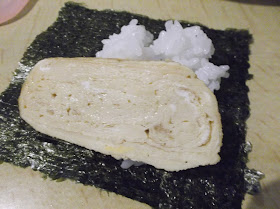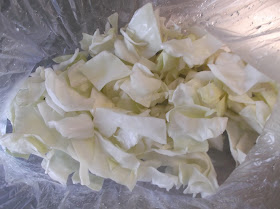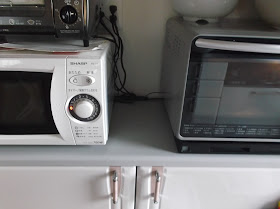In Nagaoka city, Niigata prefecture, there is a thing called "Italian". It's essentially yakisoba (fried noodles) with meat source poured over it.
新潟県の長岡市には、「イタリアン」というものがあります。基本的には、焼きそばにミートソースをかけたものです。
I have posted a photo of a fast food version of it here (fourth photo).
I have also posted photos of a home-made version, made from a store-bought pack here.
ファーストフード店のイタリアンの写真をここに載せました(4番目の写真)。
また、市販のパックで作った手作りのイタリアンの写真をここに載せました。
For lunch today, I have made my first attempt to make it at home, using spaghetti.
First, I needed to turn spaghetti into ramen noodles, using my recipe.
今日の昼ご飯には、スパゲティを使って家で作ることに初めて挑戦しました。
まず、私のこのレシピでスパゲティをラーメンの麺に変えました。
I was a bit worried because the liquid was not very yellowish.
液があまり黄色ぽっくないのでちょっと心配しました。
I transferred the contents (spaghetti and water) of the container to a frying pan. I thought that I could turn the spaghetti into ramen noodles simply by heating.
容器の中身(スパゲティと水)をフライパンに移しました。単に加熱すれば、スパゲティをラーメンの麺に変えられると思いました。
I was wrong. Within one minutes after the start of heating, the liquid turned gluey.
間違っていました。1分もたたぬうちに液は糊状になってしまいました。
I had add some hot water from the thermos to boil the spaghetti.
魔法瓶にお湯を少し足して、スパゲティを茹でました。
I then rinsed it and drained.
水洗いして、水を切りました。
I was planning to use chuunou sauce (a type of Worcestershire sauce), but luckily, I found leftover yakisoba sauce in the fridge.
中濃ソースを使おうと思っていたのですが、運よく、冷蔵庫に焼きそばソースの残りがありました。
I sprinkled it over the noodles,
麺に振りかけて、
mixed, and heated for some time.
まぜて、しばらく加熱しました。
The noodles were already very tasty, even without meat sauce.
麺は、ミートソースなしでも、すでに美味しかったです。
I transferred the noodles to a plate,
麺をお皿に移し、
poured some store-bought meat sauce.
市販のミートソースをかけました。
Because the meat sauce was fridge-cold and the noodles needed some additional heating, I wrapped the plat with plastic wrap and microwaved it for 1 minute.
ミートソースは冷蔵庫に入れてあったし、麺ももう少し加熱が必要だったので、ラップをして、電子レンジで1分加熱しました。
Voila!
できました!
Very tasty indeed!
本当に美味しかったです!





























































